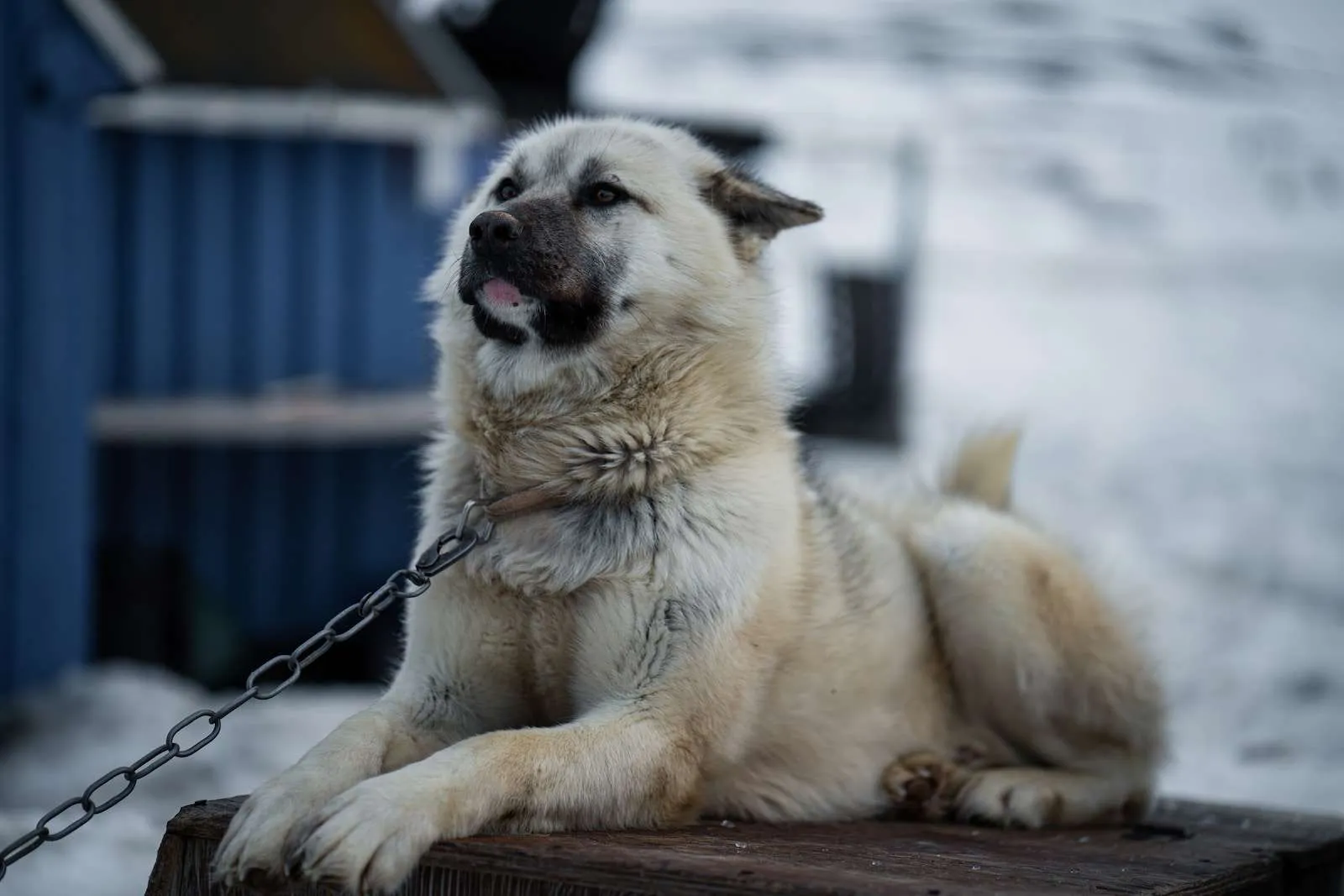Statistics:
- Height: 24 to 27 inches (males), 23 to 26 inches (females)
- Weight: 80 to 115 pounds (males), 70 to 100 pounds (females)
- Life Span: 10 to 13 years
- Diet: High-quality dog food with consideration for their age, size, and activity level.
Otterhound Overview:
The Otterhound is a rare and distinctive dog breed known for its keen sense of smell and love for water. Originating in England, these hounds were originally bred to hunt and track otters, hence their name. They are one of the oldest British breeds, with a history that dates back several centuries. Despite their long history, Otterhounds remain a relatively uncommon breed both in the UK and worldwide. Otterhounds are large, shaggy dogs with a gentle and affectionate nature. They make devoted family companions and excel in water-related activities due to their webbed feet and strong swimming ability.
Otterhound Highlights:
- Remarkable Scent Tracking: Otterhounds possess an exceptional sense of smell, making them excellent scent hounds. They are capable of tracking scents across difficult terrains.
- Affectionate and Friendly: Otterhounds are known for their friendly and sociable nature. They generally get along well with people and other pets, making them suitable for families with children and multiple pets.
- Water Enthusiasts: As water-loving dogs, Otterhounds have a strong affinity for swimming and enjoy spending time in the water. Their waterproof double coat and webbed feet make them well-suited for aquatic activities.
Otterhound Evolution and History:
The history of the Otterhound dates back to medieval times in England. Bred to hunt otters, which were considered pests in rivers and streams, the breed was highly valued for its tracking and swimming abilities. However, as otter hunting declined in the 19th century, so did the demand for Otterhounds. By the early 20th century, the breed was nearly extinct. Dedicated efforts by breed enthusiasts and conservationists helped revive the Otterhound population, but it remains a rare and endangered breed to this day.
Otterhound Size and Weight:
Otterhounds are large and sturdy dogs, with males typically standing between 24 to 27 inches at the shoulder and weighing between 80 to 115 pounds. Females are slightly smaller, ranging from 23 to 26 inches in height and weighing between 70 to 100 pounds.
Otterhound Personality:
Otterhounds are known for their friendly and gentle demeanor. They are good-natured dogs that form strong bonds with their families. While they can be independent thinkers, they are generally good with children and other pets, making them excellent family dogs.
The Adaptability of the Otterhound:
Due to their friendly and sociable nature, Otterhounds can adapt well to family life and living with other pets. However, they do have high exercise needs and may not be suitable for apartment living.
Otterhound Temperament:
Otterhounds are laid-back and patient dogs, but they can also be stubborn. They require patient and consistent training to bring out the best in their temperament.
Otterhound Maintenance and Grooming:
Otterhounds have a shaggy double coat that requires regular grooming to prevent matting and to keep their fur clean. They are moderate shedders and may shed more during seasonal changes.
The Trainability of the Otterhound:
As intelligent and independent dogs, Otterhounds may require patient and positive reinforcement training methods. Early socialization is essential to ensure they develop into well-behaved adults.
Exercise Needs of the Otterhound:
Otterhounds have high exercise requirements due to their history as hunting and working dogs. Daily walks, playtime, and swimming opportunities are essential to keep them physically and mentally stimulated.
Otterhound Health:
- Hip Dysplasia: A common orthopedic issue in dogs where the hip joint doesn’t fit properly into the hip socket, potentially leading to pain and arthritis.
- Gastric Dilatation-Volvulus (Bloat): A life-threatening condition where the stomach twists on itself, leading to gas buildup and possible organ damage.
- Epilepsy: A neurological disorder that causes seizures.
Otterhound Care:
Regular vet check-ups and a balanced diet are essential for maintaining the Otterhound’s health and well-being.
Otterhound Feeding:
A balanced diet of high-quality dog food, appropriate for their age and activity level, is necessary to meet the nutritional needs of the Otterhound.
Otterhound Coat Color and Grooming:
Otterhounds typically come in various colors, including black, tan, and grizzle. Their shaggy double coat requires regular grooming to prevent matting and keep them clean.
Otterhound and Children:
Otterhounds generally get along well with children due to their friendly and patient nature.
Otterhound and Other Pets:
With proper socialization, Otterhounds can live harmoniously with other pets in the household.
Similar Dogs:
- Bloodhound: Bloodhounds share the same excellent sense of smell and tracking abilities as Otterhounds. They are both gentle and affectionate breeds.
- Irish Wolfhound: Both breeds are large and have a gentle nature, making them good family companions.
The Otterhound is a unique and lovable breed with a rich history as a hunter and water enthusiast. Although rare, those fortunate enough to share their lives with an Otterhound find them to be delightful and devoted companions. With their exceptional sense of smell and love for water, the Otterhound is a breed that truly stands out from the pack.

